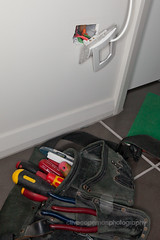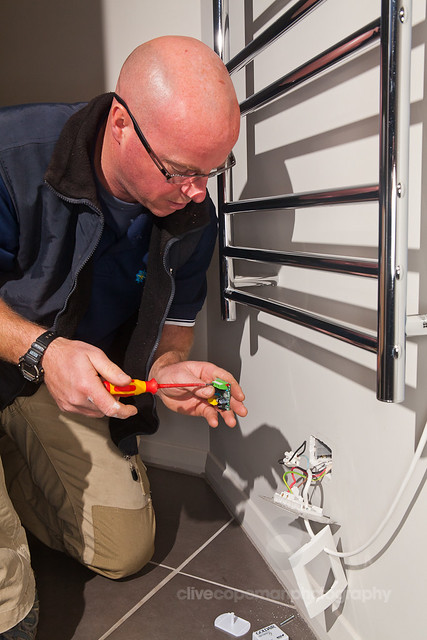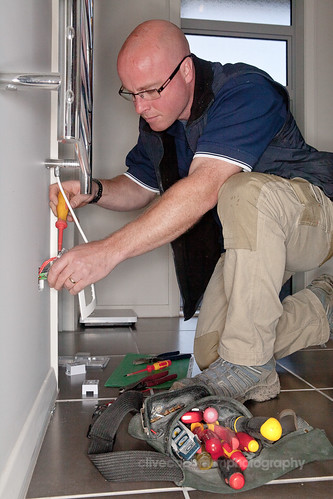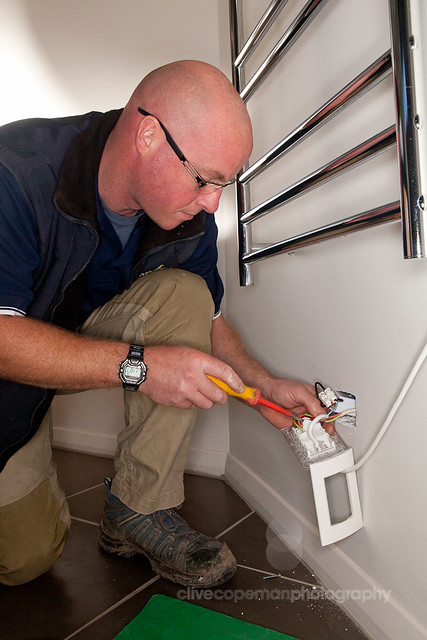
So, the other day I did a little photo shoot for EECA, the Energy Efficiency and Conservation Authority. It involved shooting Johnno, an electrical contractor installing a timer on a heated towel rail. Cutting down on that kind of waste will save householders hundreds of dollars a year and reduce the need for more power plants, dammed rivers, etc. Gets a tick from me.
The PR company that hired me on ECCA's behalf had also got a photo journo to do some shots for a story in the Otago Daily Times, so I made sure I was there early and was prepared so that I could give her the time and space she needed to do her job. She didn't need much, and lit the shot as I've seen a lot of newspaper photogs work: On camera flash pointed up, with a diffuser on. Quick, efficient, and on to the next job.
Since I was shooting stuff that might be used in a campaign, I wanted a look with just a little more pop, so my plan was to use a simple setup David Hobby of the Strobist blog uses: A key light at an angle to the subject to define things, with an Orbis ring flash to fill the dark shadows. Key and fill. Nothing exceptional apart from the choice of a ring light for fill. Kept dialed down it works nicely to eliminate hard shadows without chucking light everywhere or creating secondary shadows. My assistant Ray was my voice-activated light stand, holding the key. Here's one of the results:

It's exactly what I was working to get. Then as we got into it, I took one shot just before the flash Ray was holding could recycle, leaving Johnno lit only the ring flash. Of course it was a bit under-exposed, but shooting raw rather than jpg files, that wasn't a complete disaster and was fixable later in Lightroom. But looking at it in camera, I saw something I liked. It's nice and simple but it's not a lighting style I'd think of using for a tradesman. Normally I'd think hard, well defined directional lighting for men. This is more a glamour kind of light but I did a few more exposed primarily by the ring light, and I stumbled upon something I really liked.

You may not even notice the difference I'm going on about - and that's good, I don't want my process to distract from the image. So what's so different about this look?
Because it doesn't have the usual defining shadows created by a high key (like natural sunlight or ceiling lights), it doesn't look completely natural and yet because we're used to seeing a lot of on-camera flash, it's not so novel that it looks particularly weird. It's just a little bit different - the even light with the subtle falloff around the edges of things - and the halo-like background shadow it creates is kind of distinctive, and I certainly haven't seen it used for tradesmen before. Because of that, I like it and I'm going to keep playing with it. I like to be versatile, but if you're serious about creative endeavours, it's important to evolve a distinctive style of your own too.

Your style is influenced very much by your choice of tools.

No comments:
Post a Comment